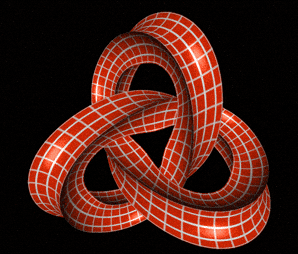Imagine your daily commute, but now picture that this commute never ends. Ever. You drive past identical houses, identical gardens, and identical street lamps, circling the same route indefinitely, trapped in an eternal loop. Before long, even your Spotify playlist becomes maddening. This quirky nightmare scenario is precisely the unsettling predicament Gemma and Tom find themselves in Lorcan Finnegan’s film Vivarium. Beyond the eerie suburban landscape, the film cleverly highlights our brain’s paradoxical relationship with infinity, finite, and everything in between.
Directed by Lorcan Finnegan, Vivarium follows Gemma (Imogen Poots) and Tom (Jesse Eisenberg), a young couple searching for their ideal starter home. They’re led into "Yonder," a disturbingly uniform housing development that soon reveals itself as a looping, unending suburban maze. Attempts to leave only bring them back to their doorsteps, and the sudden appearance of a creepy, mysterious child further intensifies their existential dread. As days blur into endless repetitions, their psychological deterioration becomes as fascinating as it is terrifying. But beyond its horror premise, Vivarium is a powerful allegory about how the human brain responds to concepts of infinity, finity, and the frustrating space in between.
The Brain’s Need for Boundaries: Why Finity Feels Safe
Our brains are wonderfully complex machines, finely tuned over millions of years to detect boundaries, limits, and endpoints. Our ancestors navigated physical worlds bounded by rivers, mountains, and valleys—distinct edges that signified safety, danger, or the unknown. Neuroscientifically speaking, finite boundaries activate the hippocampus and prefrontal cortex, responsible for spatial awareness, memory formation, and decision-making. Boundaries provide comfort because they give our neurons something solid to hold onto.
Enter Yonder, the surreal suburb of Vivarium, whose endlessness subverts this innate craving for edges. Here, the reassuring neural signals that say "You've reached your destination!" are perpetually silent. Without boundaries, our spatial navigation systems panic, triggering anxiety and psychological stress. Gemma and Tom’s escalating desperation vividly portrays how crucial finitude is to human sanity.
Infinity and the Brain: Fascination and Fear
Yet, paradoxically, while our minds crave finity, they’re also irresistibly drawn toward infinity. From ancient philosophers staring at the night sky to modern physicists theorizing about endless universes, infinity captivates human imagination like few other concepts. But why?
The neural networks of our brains—especially those involved in abstract thinking, imagination, and creativity—are uniquely evolved to contemplate boundless possibilities. The brain’s default mode network, activated during daydreaming, creative thinking, and problem-solving, constantly plays with notions of "what if" and "what else." Contemplating infinity engages these networks deeply, potentially explaining our simultaneous fear and fascination.
Evolutionarily, contemplating infinity might provide cognitive advantages. It lets us envision countless future scenarios, plan strategically, and innovate creatively—abilities essential for survival in ever-changing environments. But when infinity isn’t about boundless possibilities but rather boundless repetition—as in Vivarium—this evolutionary strength becomes a cognitive nightmare. Suddenly, the "infinite possibilities" transform into "infinitely monotonous repetitions," leaving the brain trapped in a kind of neuropsychological quicksand.
The Neuroscience of Monotony: When Endless Isn’t Limitless
While our brains excel at exploring infinite possibilities, they severely struggle with infinite sameness. In monotony, neurons receive repetitive stimuli until they begin habituating, reducing their responsiveness. But prolonged monotony without variety deprives the brain of dopamine release, the neurotransmitter responsible for reward, motivation, and pleasure. As we see in Gemma and Tom, the lack of novelty triggers boredom, anxiety, and, ultimately, despair.
In extreme repetitive conditions—like isolation experiments and sensory deprivation studies—brains frequently produce hallucinations or cognitive distortions, desperate to introduce novelty. Thus, Gemma and Tom’s slow psychological deterioration in Yonder accurately depicts neuroscientific phenomena observed in monotonous environments: the human brain becomes its own enemy, spiraling desperately for never-ending stimulation.

Facing an Existential Crisis? Discover Clarity and Purpose with 4MEIA’s Personalized Assessment!
Cognitive Coping Strategies: Digging Holes in the Infinite
Humorously yet profoundly, Tom spends days digging an enormous hole in Yonder’s front yard, convinced he'll eventually find an edge or boundary beneath the infinite suburbia. This futile act symbolizes a common human coping mechanism: attempting to force a finite structure onto an infinite or ambiguous situation. Psychologically, we often create rituals, routines, or arbitrary endpoints to gain comfort and control when true boundaries are elusive. Even in real-life scenarios (think pandemic lockdowns or tedious corporate tasks), we instinctively invent patterns or imagined end-points to escape the psychological discomfort of open-ended situations.
In neuroscience terms, imposing artificial structure provides predictable neural stimulation and manageable dopamine rewards, preserving sanity amid uncertainty. The act of "digging" metaphorically signifies our brain's continuous, often humorous, attempt at artificially imposing closure when none exists.
Evolutionary Advantage of Infinity & Finity: Balancing Act of the Brain
Why do our brains maintain such a delicate balancing act between finite and infinite processing? The answer lies in adaptability. Evolution favored brains capable of toggling seamlessly between boundaries and possibilities. Finity provides psychological safety, clarity, and decisiveness. Infinity provides imagination, innovation, and adaptability. Human survival depends heavily on balancing both: too much infinity and our ancestors would wander aimlessly; too much finite, and they'd become trapped in rigid patterns.
This delicate neural dance explains why Vivarium feels so unsettling. The film forcefully shoves the human brain toward one extreme (infinite sameness) without allowing our evolutionary safety net of meaningful boundaries or innovative possibilities.

Gif by viennapitts on Giphy
Conclusion: Why Vivarium Is Terrifyingly Brilliant
Through its eerie, monotonous suburbia, Vivarium cleverly exploits the deep neuroscience of how humans perceive infinity, finity, and repetition. Our brains, designed for survival within natural finite constraints and adaptive infinite imagination, stumble into existential terror when forced into repetitive infinite loops devoid of novelty and boundaries.
Perhaps Vivarium reminds us that the real nightmare isn’t simply infinity itself but infinity robbed of meaning, novelty, or purpose. It subtly cautions us about the psychological danger of infinite monotony and underlines how essential boundaries, creativity, and change are to human psychological health and evolutionary success.
Infinite Powers by Steven Strogatz (A fun, accessible dive into how infinity shapes mathematics and imagination.)
Thinking, Fast and Slow by Daniel Kahneman (An engaging look at how our brains process complexity, uncertainty, and repetition.)
Gödel, Escher, Bach by Douglas R. Hofstadter (Playfully explores infinity, self-reference, and the beautiful loops our minds love to navigate.)

The content on PSYCHEFLIX is for informational and entertainment purposes only and is not intended as medical advice. Always consult a healthcare provider for diagnosis and treatment. Reliance on any information from this blog and newsletter is solely at your own risk.
This newsletter may include advertisements and affiliate links. We earn commissions from purchases made through these links, supporting our mission to provide you with valuable content.



